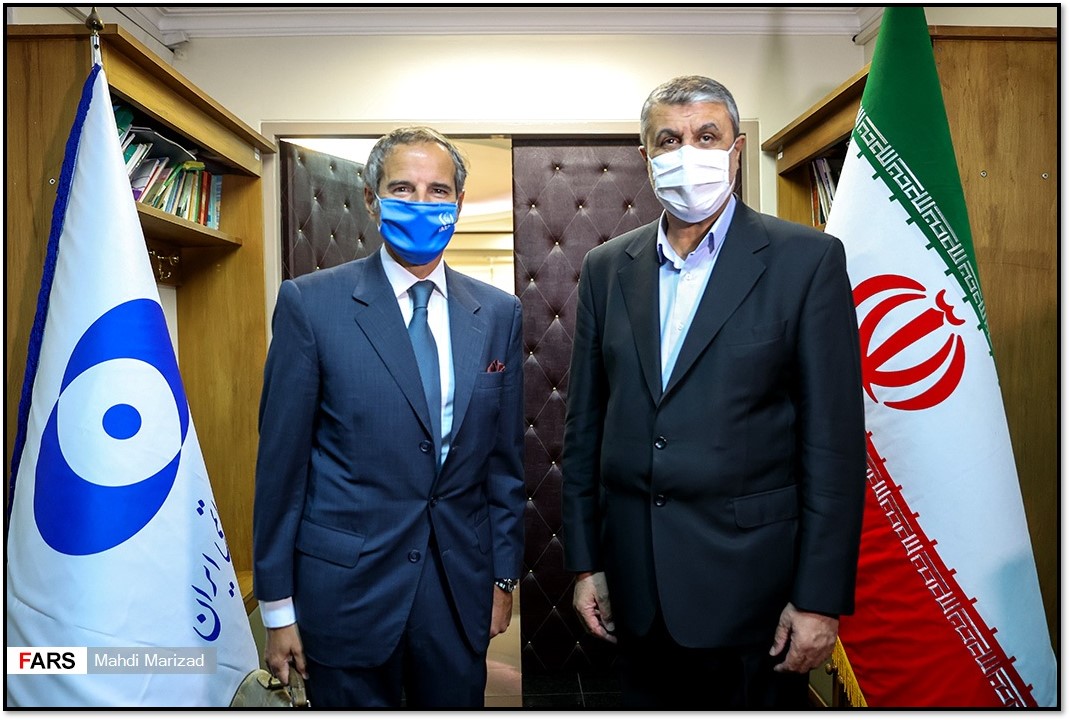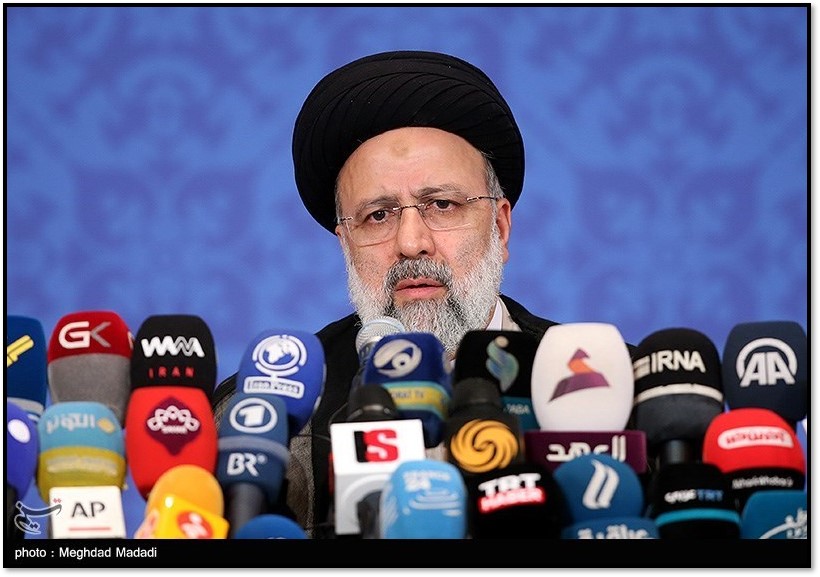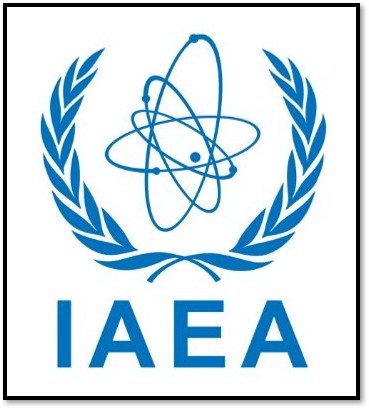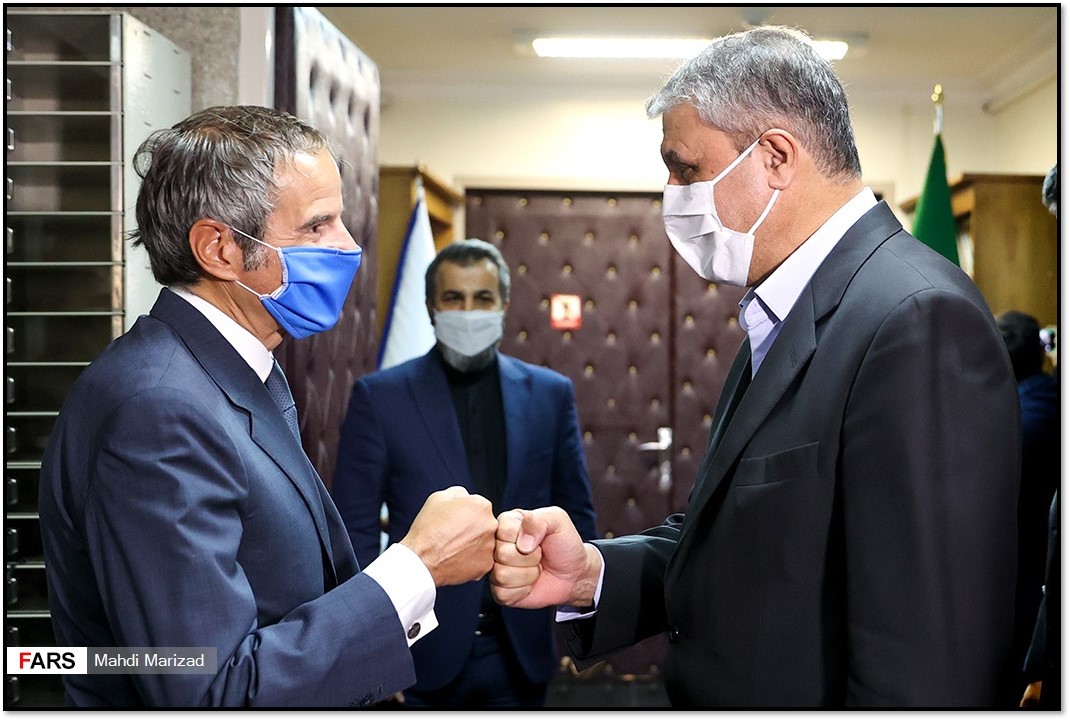On September 12, Iran and the International Atomic Energy Agency (IAEA) reached an agreement that would allow the watchdog agency to service monitoring equipment at Iranian nuclear facilities. The IAEA had not had access to its equipment, including cameras, since May 25. It urgently needed to swap out memory cards to prevent any data gaps.

The new arrangement “is indispensable for us to provide the necessary guarantee and information to the IAEA and to the world that everything is in order,” IAEA Director General Grossi said on September 12. He brokered the temporary deal with Mohammad Eslami, the head of the Atomic Energy Organization of Iran (AEOI), during a day trip to Tehran.
But Grossi also emphasized that the deal was not a permanent solution. “This has always been seen, for me at least, as a stopgap, as a measure to allow time for diplomacy,” he told reporters at the airport after returning to Vienna.
The move may have averted a crisis for diplomatic efforts to return Iran and the United States to full compliance with the 2015 nuclear deal, known formally as the Joint Comprehensive Plan of Action (JCPOA).
The IAEA’s 35-member board of governors was due to meet on September 13. Key member states – including the United States, Britain, France and Germany – were considering censuring Iran for not cooperating with the agency. Russia opposed the move because it could jeopardize Iran’s return to negotiations on the JCPOA. U.S. Special Envoy for Iran Robert Malley visited Moscow and then Paris from September 7-10 to discuss the way forward. Russia reportedly facilitated Grossi’s visit to Tehran.

Iranian President Ebrahim Raisi warned Western powers against passing a censure resolution. “In the event of a counterproductive approach at the IAEA, it would not make sense to expect Iran to react constructively. Counterproductive measures are naturally disruptive to the negotiation path also,” Raisi told European Council President Charles Michel on September 8.
Nuclear talks started in April in Vienna but stalled after Raisi, a hardliner, was elected in June. Iran said that it needed time following its political transition. But Raisi, who took office on August 5, has not specified when Iran will return to the negotiating table.
Troubling IAEA Findings
The United States and European powers were concerned about the IAEA’s findings from two confidential reports released on September 7. The IAEA said that Iran was:
- impeding the monitoring of its nuclear program
- failing to cooperate with an investigation into past activities
- continuing to breach limits stipulated in the JCPOA
The report on safeguards “paints a bleak picture of the agency’s current ability to monitor Tehran’s nuclear activities and the new Iranian government’s willingness to cooperate with the agency,” the Arms Control Association stated.
 The most time-sensitive issue was dealing with the monitoring equipment at Iranian nuclear facilities. The IAEA needed to change memory cards to ensure continuous recording of activities. “The Agency's confidence that it can maintain continuity of knowledge is declining over time and has now significantly further declined,” it warned.
The most time-sensitive issue was dealing with the monitoring equipment at Iranian nuclear facilities. The IAEA needed to change memory cards to ensure continuous recording of activities. “The Agency's confidence that it can maintain continuity of knowledge is declining over time and has now significantly further declined,” it warned.
The IAEA also noted that the data storage and recording unit from a destroyed camera at the TESA Karaj complex, a centrifuge parts plant, was missing. In June, a drone reportedly damaged the facility. Iran blamed Israel. Four of the IAEA’s six cameras were intact, but one was damaged, and one was destroyed in the attack.
Iran repeatedly threatened to limit IAEA inspections after its hardline parliament passed a new law in December 2020. The monitoring issue then became intertwined with the renewed diplomacy between the world’s six major powers and Iran over the state of the JCPOA. The key turning points were:
- Dec. 1, 2020: Iran’s parliament passed a law requiring the government to raise uranium enrichment and suspend so-called "snap" inspections by the IAEA.
- Feb. 21, 2021: Iran and the IAEA reached a compromise that would require Iran to save all footage from cameras installed at declared nuclear sites for three months. If the United States lifted sanctions on Iran, Tehran vowed to hand over the memory cards to the IAEA. Otherwise, the footage “will be deleted forever,” the Atomic Energy Organization of Iran said.
- May 22, 2021: The compromise expired but was extended for an additional month on May 24.
- June 24, 2021: The compromise expired and was not extended.
- Sept. 12, 2021: Iran and the IAEA reached a temporary deal that would allow the agency access to its monitoring equipment.
The IAEA also said that Tehran failed to explain uranium traces found at four sites—none of which had been acknowledged as part of Iran’s declared nuclear program. The IAEA was trying to determine if the undeclared sites had been used as part of a secret nuclear weapons program that continued until 2003. “The Director General is increasingly concerned that even after some two years the safeguards issues…in relation to the four locations in Iran not declared to the Agency remain unresolved,” the IAEA reported. “The lack of progress… seriously affects the ability of the Agency to provide assurance of the peaceful nature of Iran’s nuclear program.”
Lastly, the IAEA detailed Iran’s breach of limits stipulated in the JCPOA. Tehran continued to comply with its obligations for more than a year after President Trump withdrew from the JCPOA. But in July 2019, it began breaching the agreement in response to Trump’s “maximum pressure” campaign. Iran’s breaches were incremental and calibrated until the assassination of Mohsen Fakhrizadeh, a top nuclear scientist, in November 2020.
Key findings from the IAEA’s safeguards report published in September 2021 included:
- Iran continued to enrich uranium to 5 percent, 20 percent and 60 percent. The JCPOA limited enrichment to 3.67 percent until 2030. Uranium must be enriched to 90 percent or above to fuel a weapon, but enriching uranium gets easier the more highly concentrated it is. Enriching from 60 percent to 90 percent could be a relatively quick process, if Tehran made the political decision to do so.
- Iran’s stockpile of enriched uranium shrank by 799.7 kilograms to 2,441.3 kilograms since the IAEA’s last quarterly report. But the stockpile was still more than eight times larger than the 300-kilogram cap under the JCPOA.
- Iran continued to enrich uranium at the underground Fordow facility. Under the JCPOA, enrichment was banned at Fordow until 2030.
- Iran continued to enrich uranium using advanced centrifuges. The JCPOA had prohibited the use of advanced centrifuges for enrichment until 2025.
- Iran continued to produce uranium metal. The JCPOA had banned production of uranium metal, which can be used to make a nuclear weapon core, until 2025.
U.S. officials have warned that Iran’s nuclear advances could complicate a return by all parties to the JCPOA. “I'm not going to put a date on it but we are getting closer to the point at which a strict return to compliance with the JCPOA does not reproduce the benefits that that agreement achieved,” Secretary of State Antony Blinken said on September 8.
Temporary Deal

The joint statement issued by Iran and the IAEA on September 12 said that inspectors could reset its monitoring equipment. But the footage would remain under seal in Iran until an agreement on restoring the JCPOA is reached. The original compromise brokered in February included the same limitation on IAEA access to the data.
“The reconstruction and the coming together of the jigsaw puzzle [of monitoring data] will come when there is an agreement at the JCPOA level, but at that time we will have all this information and there will not have been a gap,” Grossi said on September 12.
The joint statement did not specify how long the new arrangement would last but outlined future meetings in Vienna and Tehran. The following is the text of the joint statement.
IAEA-Iran Joint Statement
A meeting between His Excellency Mr. Mohammad Eslami, Vice-President and the Head of Atomic Energy Organization of the Islamic Republic of Iran (AEOI) and His Excellency Mr. Rafael Grossi, Director General of the International Atomic Energy Agency (IAEA) took place on September 12, during his visit to Tehran.
- In this meeting the parties recalled and reaffirmed the spirit of cooperation and mutual trust and its continuation and emphasized on the necessity of addressing the relevant issues in a constructive atmosphere and exclusively in a technical manner.
- In the framework of the existing cooperation, the two sides decided to maintain their mutual interactions and meetings at relevant levels. To this end, the Vice-President and the Head of AEOI will meet the IAEA Director General at the sidelines of the upcoming General Conference, and the IAEA Director General will also visit Tehran in the near future to hold high level consultations with the Government of the Islamic Republic of Iran with the aim of enhancing cooperation between Iran and the IAEA in different fields and discussing current issues of mutual interest.
- IAEA's inspectors are permitted to service the identified equipment and replace their storage media which will be kept under the joint IAEA and AEOI seals in the Islamic Republic of Iran. The way and the timing are agreed by the two sides.
